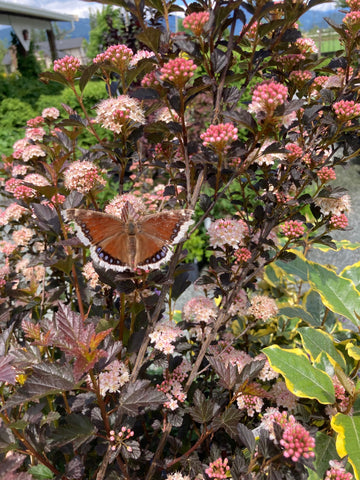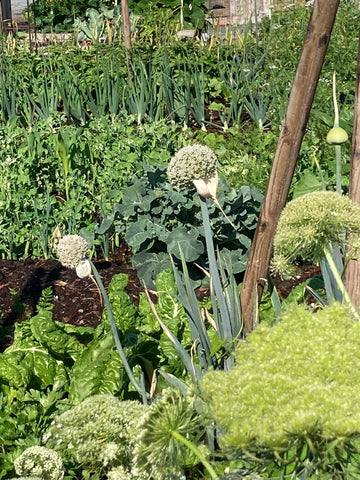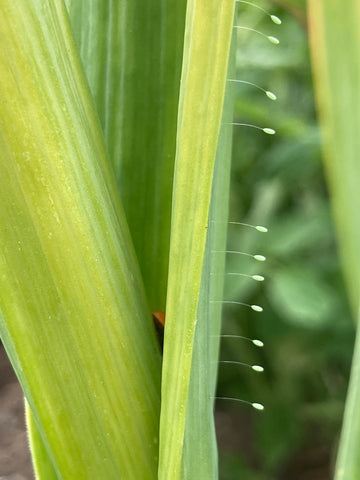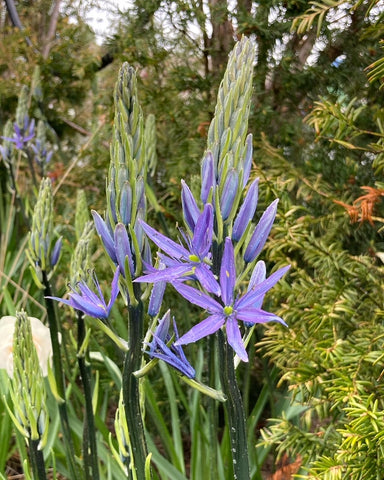While there is reason to be alarmed about the health and survival of many species of insects and pollinators there is also reason to be optimistic. While monoculture and chemical dependent farms continue their destructive practices gardeners are playing an important role as stewards and restorers. It is the town and city gardener, the balcony gardener, or the forward thinking market garden farmer that is having a positive impact on wildlife populations. Every deliberate gardening decision that has a positive impact for wildlife is an act of salvation for pollinators and other creatures up and down the food chain. Individual gardens, large and small, boulevard plantings, even balcony planters can be nurturing islands of safety and shelter for insects. As more gardeners become aware of the plight of some of our most vulnerable fauna they are changing what they plant and how they garden. These changes are adding up to positive impacts for insects.

There is much talk about pollinators and pollinator gardens and maintaining pollinator populations, but gardening for pollinators is much more than that. When we are deliberate in our gardening choices to provide food and habitat for pollinators, we also feed other creatures up and down the food chain so that pollinator gardens could better be called wildlife gardens or habitat gardens. And while we may be thrilled to see the bees and the butterflies abundant in our gardens we can be equally pleased to deduce that there is a proportional increase in nearby bird or amphibian species.
The expression “if you build it, they will come” can be applied to a garden setting just as well as to a business establishment or theme park! I’m often amazed at how soon insects and other creatures take up residence in a freshly planted area. First it is the transient visitors like the Red Admiral that will flit by and stop for a sip of nectar from an agastache plant. Later, as the plants become established there will be evidence of permanent residents such as tiger beetles or snails. Gardeners that are mindful and deliberate about preserving and maintaining wildlife populations build and maintain these habitats using a multi-pronged approach. They make diverse plant choices to feed many different insects and different stages of development in the insects’ lifecycle. They make plant and material choices that will feed or house wildlife over all of the seasons. Finally, their gardening practices are geared towards sustaining and nurturing wildlife.


One indication of a healthy ecosystem is diversity. Biologists look at the multiple layers of plants and insects in a community and measure the health of that community based on the complexity. The cornfield across from our home would score very low, our front lawn somewhat higher since I don’t apply herbicides or chemicals to it, while our perennial garden would score much higher. Generally, the more plant varieties there are in a planting, the more food sources there are available for different insects. I am cautious about providing a comprehensive list of the excellent pollinator plants available to plant or seed. I feel that that list would be incomplete no matter how long I’d make it. Rather, I’d like to leave the reader with some criteria to look for when planting for wildlife. First off, seek diversity in plants but don’t focus only on flowers! Insects need habitat for nesting and egg laying, and a food source for their young. Last year, I was delighted to find a large population of Western Tiger Swallowtail caterpillars feeding on the leaves of the lovage plant in my herb garden. Weeks later, the adults feasted on the nectar of lavender and agastache in a different part of the garden. Another way of seeking diversity for pollinators is to plant for the off seasons. Bees in particular will start searching for pollen as soon as they have a sunny day, even in winter. Some of our native willows are among the earliest food sources for bees as they start to flower in January. Another great pollen source for the off season is winter flowering heather.
Native plants, such as the gorgeous camas lily (Camassia leichtlinii), are an excellent choice for those trying to sustain and nourish native wildlife populations. Obviously native plants are the best food source for our native wildlife because of their long history of existing side by side. For example the mason bee that is revered for its excellence as a pollinator of spring flowering fruit trees is actually highly specialized to feed on the flowers of the native big leaf maple (Acer macrophyllum). In fact, it only appears in spring over the same period in which the big leaf maple is in flower. In this short window it feeds, mates, lays its eggs and dies. Fortunately the apples, plums, and pears are also blooming in this brief window of time.


My biggest caution against the use of native plants is the fact that they are generally very specialized for certain environments. Our urban and rural settings have been so altered from the native conditions that they have very little in common with the original environment. For example, I have seen plantings where a well-meaning designer has planted an assortment of native plants in the planting beds of a parking lot. At the best of times parking lots are a hostile environment for plants; for Pacific Northwest native plants they are death camps. To be successful with native plants one must mimic the environment in which they thrive. Begin with changing the environment back to the native conditions by planting trees and allowing leaves and needles to compost in place before introducing sensitive understory plants.


The vegetable garden is another space where gardeners can enhance the food available to wildlife. Save a bit of space among the carrots and the beans for flowering plants such as calendula or sunflowers. Not only will they provide months of nectar or pollen to insects but they will also drop seeds for hungry birds months hence. Allowing some of the vegetables to flower and set seed is another great way to attract beneficial insects to a garden. Carrots and brassicas are both wonderful food sources for insects.
The tidy gardener is not a friend to wildlife. The best havens for wildlife are those gardens that mimic plants in their natural environment. That means that perennials are allowed to die down in the fall and are left as long as possible without being cut back until spring. Leaves are allowed to lie in the beds and decompose into the soil providing rich nutrients to the soil organisms while providing bedding and protection for overwintering insects. Where this may not be feasible for all parts of the yard, allow it to occur in some areas. Many gardeners will provide housing and insect shelters in the form of mason bee logs, bug hotels or bat houses.


There are rich rewards for the gardener that is deliberate about nurturing and maintaining wildlife. These rewards are the moments that unfold in the garden as hummingbirds or butterflies, or bees, or any other creature drift in and out of the scene and every second is different for the last. In fact, the gardener that fed the soil and tended the plants now becomes a participant in the minute dramas of the space they call their garden. A garden that because of its richness and diversity enriches and restores the gardener!
Learn more about pollinator wildlife gardening by joining Local Harvest's Online Organic No-Till Gardening Course. This self-paced organic gardening course offers instructions to achieve food self-sufficiency, build soil fertility and grow an abundance of nutrient dense food year-round.
Learn more about pollinator wildlife gardening by joining Local Harvest's Online Organic No-Till Gardening Course. This self-paced organic gardening course offers instructions to achieve food self-sufficiency, build soil fertility and grow an abundance of nutrient dense food year-round.
Visit Fruits and Shoots Plant Farm, a boutique garden nursery in Chilliwack, British Columbia.






















